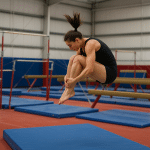Embarking on a journey to learn how to do the splits is a rewarding endeavor that combines dedication, consistent practice, and a deep understanding of your body. This comprehensive guide, “Master the Splits: Stretches for Splits in 30 Days,” is designed to help you improve flexibility and achieve your split goals safely and effectively.
We will explore various stretches for splits, addressing the different types of splits and providing a structured approach to get into the splits, even if you are stretching at home.
Understanding the Types of Splits
There are two types of splits – front and side (also called middle splits).
Front splits can be done with either the right or left leg stretched out in front.
Most people are naturally more flexible on one side than the other when they do front splits.
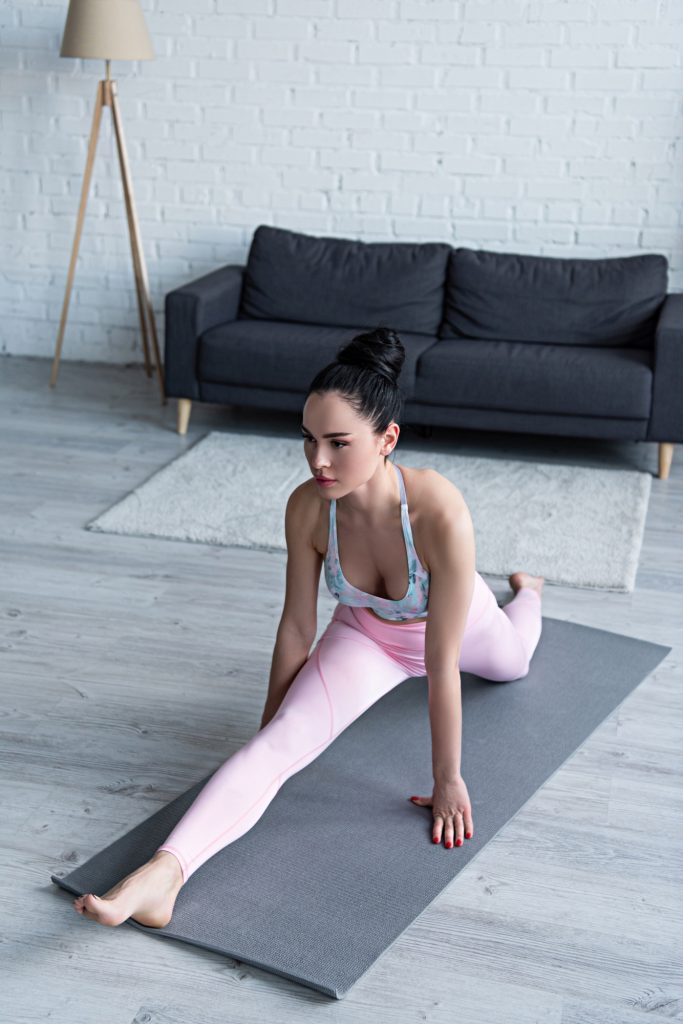
What Are the Different Types of Splits?
The front split, a staple in gymnastics and dance, requires one leg straight and extended forward while the other leg straight extends backward, forming a straight line.
In the front split, the goal is to have your front thigh fully touching the ground. The middle split, also known as the side split, involves both legs extending out to either side of you, forming a 180-degree angle. Understanding these types of splits is crucial for tailoring your stretches to achieve the desired result and to help improve your overall range of motion.
Benefits of Mastering the Splits
The benefits of mastering the splits extend far beyond mere physical prowess. It is a testament to improved flexibility in your hamstring, hip flexor, and adductor muscles. Achieving the splits can help improve athletic performance, reduce muscle tension, and enhance posture.
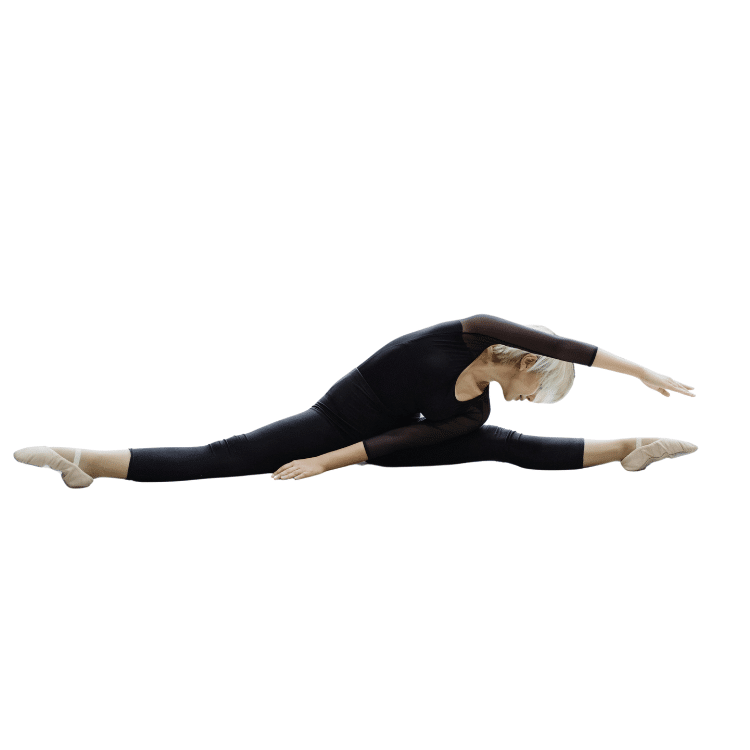
Consistent practice of stretches for splits can also lead to a greater range of motion, making everyday activities easier and more comfortable. Additionally, the discipline and dedication required to learn to do the splits fosters mental resilience and a sense of accomplishment. It’s not just about touching the ground; it’s about the journey of consistent practice and self-improvement.
Common Misconceptions About Splits
Many myths surround the pursuit of splits, leading to potential risk of injury and discouragement. One common misconception is that splits are only for gymnasts or naturally flexible individuals. In reality, with consistent practice of the right stretches for splits, anyone can improve their flexibility and work towards achieving this goal. Another myth is that you can achieve the splits in a matter of days.
While this guide is titled “Splits in 30 Days,” it’s essential to approach it with realistic expectations and prioritize safety over speed. Furthermore, many believe that feeling intense pain is a necessary part of the stretching process. While some discomfort is normal, sharp or unbearable pain is a sign to stop immediately to prevent injury.
Preparing for Your Splits Journey
Before embarking on your “splits in 30 days” journey, it’s crucial to assess your current flexibility. Try a basic hamstring stretch, like reaching for your toes while seated with your legs straight. See how far you can comfortably bend forward. Attempt a low lunge and observe the range of motion in your hip flexors.
Gently try a front split or middle split, going only as far as is comfortable. Note any areas of tightness or discomfort. Understanding your baseline flexibility allows you to tailor your stretches for splits and track your progress as you learn to do the splits. Remember to prioritize safety and listen to your body.
Essential Equipment for Stretching
While you can do stretches for splits at home with minimal equipment, a few items can enhance your experience and help improve your safety. A yoga mat provides a comfortable and stable surface. Yoga blocks can assist in deepening stretches by providing support when you are not quite able to reach the floor. A resistance band can be used for warm-up exercises and to target specific muscle groups.
Comfortable clothing that allows for a full range of motion is also essential. Finally, having a mirror nearby can help you monitor your form and prevent injury as you work towards mastering the splits.
Setting Realistic Goals for Splits in 30 Days
Embarking on a journey to “master the splits” requires realistic expectations. It’s unlikely that you’ll achieve a full split in 30 days, especially if you’re starting with limited flexibility. Instead, focus on improving your range of motion and gradually increasing your flexibility.
Set smaller, achievable goals, such as being able to lower yourself further in a lunge or reaching your toes more easily in a hamstring stretch. Celebrate these small victories to stay motivated. Remember that consistent practice is key, and progress varies from person to person. Prioritize safety and avoid pushing yourself too hard to prevent injury.
Stretches for Front Splits
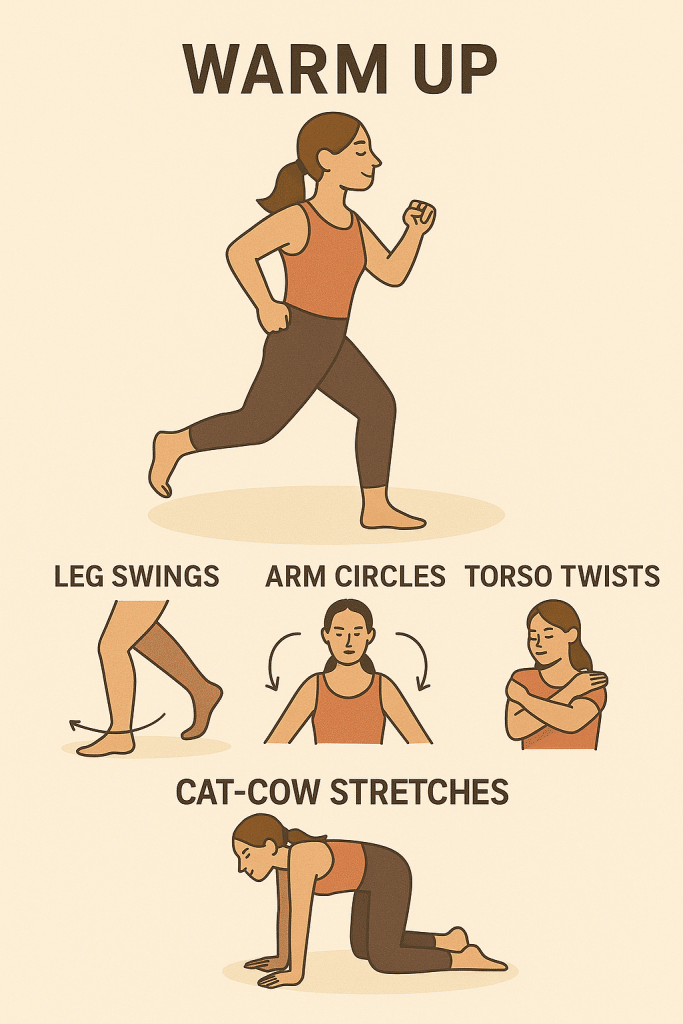
Warm-Up Exercises to Get Started
Before diving into specific stretches for splits, it’s crucial to prepare your muscles with a proper warm-up. Begin with five to ten minutes of light cardio, such as jogging in place or jumping jacks, to increase blood flow. Once your muscles are warm they become more flexible. Follow this with dynamic stretches to get into the splits safely.
Leg swings, arm circles, and torso twists enhance mobility. Perform several repetitions of cat-cow stretches to mobilize the spine. To perform the cat-cow change your back from arch to hollow dish repetitvley.
These warm-up exercises help improve flexibility, and prevent injury, ensuring that your muscles are primed and ready for more intense stretching. This is important for anyone, especially for those trying to learn to do the splits or improve their range of motion.
Key Stretches for Achieving the Front Split
Several key stretches can help you work towards achieving the front split. Begin with the hip flexor stretch. Kneel on your right leg with your left leg in front in a lunge position. Gently push your hips forward, feeling a stretch in your right hip flexor.
Hold for 20 seconds.
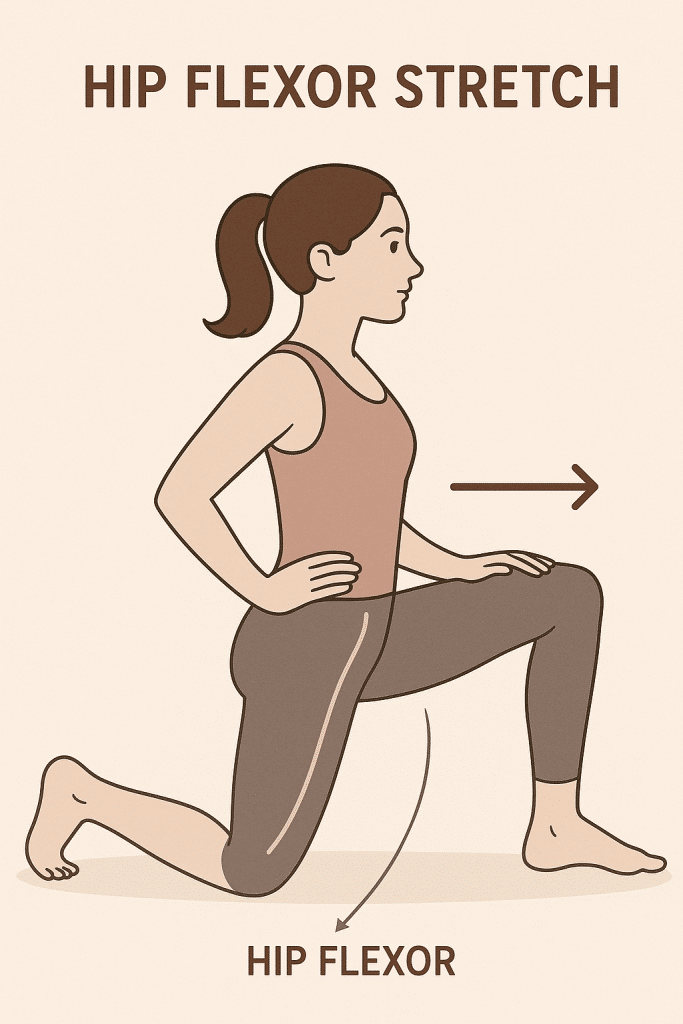
Next, perform the hamstring stretch by sitting with one leg straight and bending forward. Hold for 20 seconds.
Progress to the low lunge, placing your hands on the floor and sinking deeper into the stretch.
Include the butterfly stretch to target your adductor muscles. These stretches improve flexibility, and will lead to touching the ground.

Tips for Maintaining Proper Form
Maintaining proper form is paramount to prevent injury and maximize the effectiveness of stretches for splits. Engage your core throughout each stretch to protect your lower back. Keep your spine straight and avoid hunching or rounding your shoulders.
When performing lunges, ensure that your front knee stays directly above your ankle. Distribute your weight evenly to maintain balance. Focus on breathing deeply and evenly, allowing your muscles to relax. If you feel pain, stop immediately and adjust your position. Consistent practice with proper form leads to sustainable progress and ensures you learn to do the splits safely and effectively, even when stretching at home.
Stretches for Middle Splits
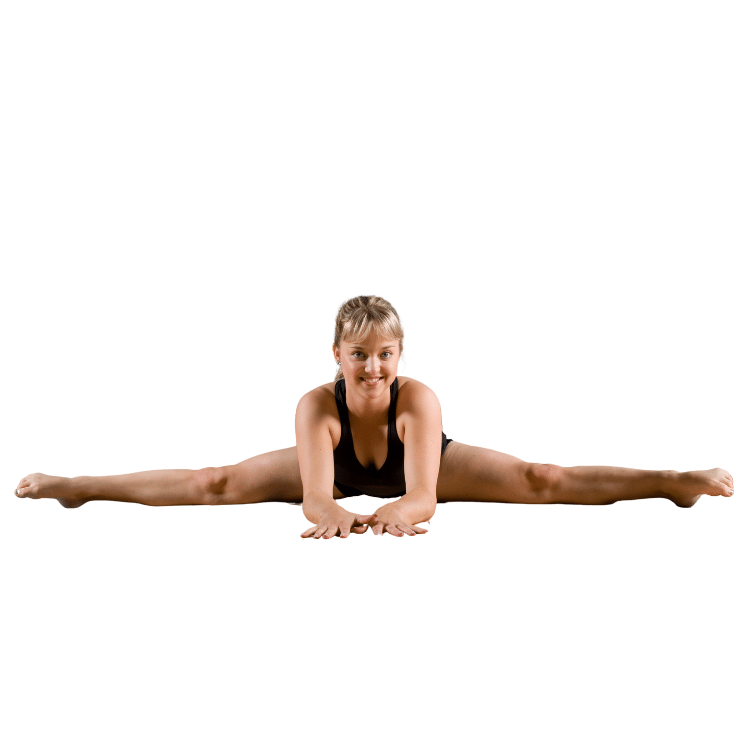
The middle split, also known as the side split, requires a different set of stretches than the front split. This split involves extending your legs to either side of you, aiming to form a 180-degree angle with your legs.
The ability to master the splits in this position requires significant flexibility in your inner thigh, adductor, and hamstring muscles. Understanding the biomechanics of the middle split is crucial for performing the appropriate stretches safely and effectively, whether you are a gymnast or just want to improve flexibility in your hips. It is important to practice splits at home.
Effective Stretches to Achieve the Middle Split
Several stretches can help you to learn to do the splits. Begin with the butterfly stretch. Sit with the soles of your feet together and gently push your knees towards the floor to feel a stretch in your inner thigh muscles.
Next, try wide-legged seated forward folds, reaching your hands on the floor in front of you or to either side of you. Groin stretches, performed by widening your stance and lowering your hips, can also be beneficial.
Hold each stretch for 20 seconds. Consistent practice, along with proper warm-up, will lead to touching the ground and improve flexibility for the full split. These stretches to get into the splits will help prevent injury.
Common Mistakes to Avoid During Training
When training for the middle split, several common mistakes can hinder your progress and increase the risk of injury. Avoid forcing the split or pushing yourself too far, especially when feeling pain. It’s essential to listen to your body and gradually increase the intensity of your stretches for splits over time.
Neglecting proper warm-up exercises can also lead to muscle strains. Ensure you incorporate dynamic stretches for the adductor and hamstring muscles. Another mistake is focusing solely on flexibility without building strength in your glutes and leg muscles to support your range of motion.
Prioritize safety, engage your core, and maintain proper alignment during all stretches.
Stretches for Side Splits
Preparing your body for side splits involves more than just stretching. Begin with a dynamic warm-up focusing on your inner thighs, hamstrings, and hip flexors. Include leg swings, torso twists, and hip circles to increase blood flow and mobility.
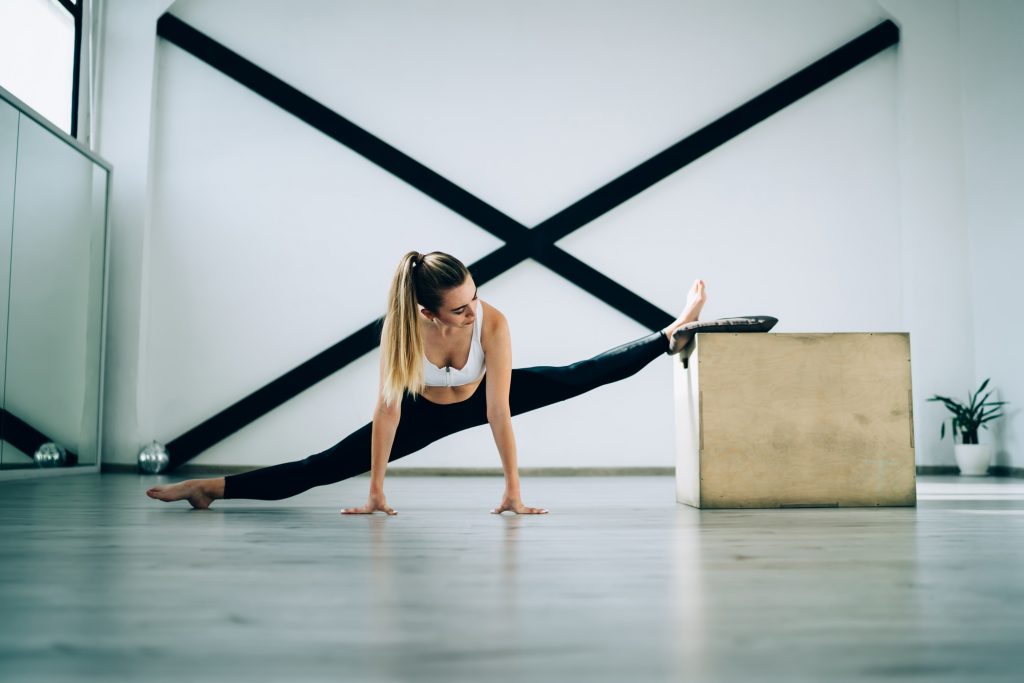
Foam rolling can also help release tension in the adductor muscles and glutes. Perform static stretches, holding each position for 20 seconds, after your warm-up. Remember to breathe deeply and evenly throughout your stretching routine.
Building a strong foundation of flexibility and mobility will help you work towards achieving the side split safely and effectively and avoid a potential risk of injury.
Progressive Stretches for the Side Split
Progressive stretches are key for achieving the side split. Start with a wide-legged stance and gradually lower your hips towards the floor, using your hands on the floor for support. Gradually increase the width of your stance as your flexibility improves.
Use yoga blocks to support your hands on the ground if you cannot reach the floor. Side lunges can also help improve flexibility. Slowly transfer your weight from one leg to the other, feeling a stretch in your inner thigh and hamstring. Consistent practice and patience are essential. Slide your front leg towards a front lunge position with your back knee on the floor.
Incorporating Side Splits into Your Routine
Incorporating side splits into your routine requires a consistent and structured approach. Dedicate minutes a day to stretching, focusing on flexibility in your adductor, hamstring, and hip flexor muscles. Combine static and dynamic stretches for optimal results. Be patient with your progress and celebrate small victories along the way.
Remember that everyone’s body is different, and it takes varying amounts of time to achieve a side split. If you are able to do the splits, you’ll notice better performance. Listen to your body, prioritize safety, and enjoy the journey of improving your flexibility and range of motion, even when performing splits at home.
Creating a 30-Day Splits Stretch Plan
Crafting a “splits in 30 days” plan requires a strategic breakdown of stretches for splits and exercises to enhance flexibility. In the first week, focus on establishing a solid foundation with basic stretches like the hamstring stretch, hip flexor stretches, and the low lunge, holding each for 20 seconds.
The second week introduces more challenging stretches like the butterfly stretch, wide-legged forward folds, and side lunges. By week three, progressively deepen each stretch and incorporate dynamic movements. Week four focuses on maintenance and refining your form as you get into the splits to prevent injury. Always listen to your body and engage your core.
Tracking Your Progress Over 30 Days
Consistent tracking is key to monitor your improvements and adjust your approach as you master the splits. Keep a daily journal to record the stretches for splits you performed, the duration of each hold, and how your body felt. Note any areas of tightness or discomfort.
Take pictures or videos of yourself performing stretches for splits to visually track your increased range of motion. Measure the distance between your thighs and the floor in a lunge position as an indicator of progress. This information helps you to adjust your plan as you work to learn to do the splits and help improve your splits at home.
Adjusting Your Plan Based on Flexibility Gains
As you learn to do the splits, it’s essential to adjust your “splits in 30 days” plan based on your individual progress and flexibility gains. If you find certain stretches becoming easier, progressively deepen them or try more challenging variations. If you experience pain in a particular muscle group, modify the stretch or take a break to prevent injury. Listen to your body and be willing to adapt your routine. Consistent practice is important, but rest and recovery are equally crucial for muscle repair and growth as you work towards a full split. Remember that the goal is to improve flexibility and range of motion safely and effectively.
Incorporating Splits into Gymnastics
In gymnastics, the ability to master the splits is an essential component of many routines. The front split and middle split are frequently incorporated into floor exercises, beam routines, and even vault performances. Performing a perfect split requires not only flexibility but also strength, balance, and control.
The “stretches for splits” are important in learning these skills, as is a gymnast’s leg position during various movements.
Being able to do the splits increases the aesthetic appeal of routines, showcases the athlete’s flexibility and precision, and contributes to higher scores from the judges. It also helps improve performance.
Advanced Techniques for Gymnasts
Aspiring gymnasts looking to excel in splits can benefit from advanced stretching techniques. Proprioceptive Neuromuscular Facilitation (PNF) stretching involves contracting the muscles you’re stretching before lengthening them to achieve a greater range of motion.
Assisted stretches, performed with a coach or partner, can help deepen the stretch while ensuring proper form. Dynamic stretches, such as leg swings and high kicks, can further enhance flexibility and warm the muscles. Incorporate plyometric exercises to build strength in your glutes, hamstrings, and hip flexors, and engage your core. A gymnast should learn to do the splits safely.
Safety Tips for Aspiring Gymnasts
For aspiring gymnasts pursuing splits, safety should always be the top priority. Proper warm-up exercises are crucial. Prioritize stretches for splits and getting into the splits. Avoid pushing yourself too hard or forcing your body into positions it’s not ready for, as this can lead to muscle strains and other injuries. Always listen to your body. Engage your core during all stretches and exercises to protect your lower back.
Gymnasts should ensure they are able to do the splits and have appropriate coaching and supervision to minimize risk, whether performing splits at home. Remember that consistent practice and gradual progression are key to achieving your goals safely and effectively.
- Xcel Gymnastics Program: Levels, JO, & Competitive GuideThe Xcel Gymnastics Program is a dynamic and flexible alternative to the traditional Junior Olympic (JO) program, designed to provide gymnasts of varying abilities a… Read more: Xcel Gymnastics Program: Levels, JO, & Competitive Guide
- Master the Splits: Stretches for Splits in 30 DaysEmbarking on a journey to learn how to do the splits is a rewarding endeavor that combines dedication, consistent practice, and a deep understanding of… Read more: Master the Splits: Stretches for Splits in 30 Days
- How to Do a Front Tuck: A Step-by-Step GuideThis detailed guide will clearly explain how to do a front tuck somersault safely and successfully. The front tuck is an advanced skill so therefore… Read more: How to Do a Front Tuck: A Step-by-Step Guide
- How to Do a Back Handspring: Complete Step-by-Step GuideLearning how to do a back handspring is an exciting milestone for any gymnast. It builds confidence, agility, and forms the foundation for advanced tumbling… Read more: How to Do a Back Handspring: Complete Step-by-Step Guide
- How To Get Over a Mental Block In Gymnastics: A Complete GuideGymnastics is a sport that requires not only physical strength and skill but also mental strength. When a gymnast feels like they cannot attempt a… Read more: How To Get Over a Mental Block In Gymnastics: A Complete Guide
- The Best Leotard for Girls in 2025: What to Look ForFinding an ideal leotard for girls isn’t just about picking a dazzling design that sparkles (although it does help!). The leotard has to fit perfectly,… Read more: The Best Leotard for Girls in 2025: What to Look For



